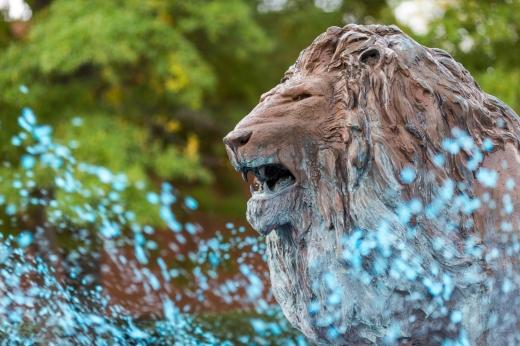By Maya Reid
Nora Noffke's love for fossils started as a child when she used to hike with her parents on Schwaebische Alb, a mountain chain in Germany.
"This area is rich in fossils of Jurassic age, so my path to geology and paleontology was set in stone very early on," said Noffke, an associate professor in the Department of Ocean and Earth Sciences at Old Dominion University's College of Sciences.
Her love for ancient organisms will now live because of as "a simple act by a colleague who gave a kind nod."
Noffke's fellow paleontologist, Greg Retallack, professor of paleontology and geology at the University of Oregon, named a fossil from the Jurassic Age "Noffkarkys" ("net of Noffke"). It was found in the Grant Bluff Formation of Central Mount Stuart, Northern Territory, Australia.
The 550-million-year-old fossil belongs to the Ediacaran Fauna fossil group, an extinct group that formed the first multicellular organism.
There are many ways to name a fossil.
"Names can reflect the morphology of the fossil, to describe the area the fossil was found, or as a nod to another colleague as in my case," Noffke said.
He named the fossil after Noffke because of her work on microbially induced sedimentary structures (MISS).
"These structures are common in Precambrian rocks, especially in fossil soils, which are my specialty," Retallack said.
Noffke and Retallack have worked together for years researching fossils.
"We collected the fossils on a 10-kilometer transect up and down Central Mount Stuart in the geographical center of Australia," Retallack recalled.
Noffke's current study pertains to microbial mats in a modern setting along the coast.
"While I am not working on Ediacara fossils, they do occur where bacteria once formed thick carpets (called microbial mats) on the floor of a shallow ocean," Noffke said. "We want to know how they respond to changes of the shoreline and what kind of traces they leave behind in the sand."
Microbial mats are organic layers resembling a blue-grey carpet which are composed of trillions of microorganisms, specifically photoautotrophic cyanobacteria. These microbial mats have been common throughout Earth's history, with great examples residing along the Virginia coast.
"Such traces can be found in rocks as well, dating back as far as 3.4 billion years ago in the Pilbara region of Australia," Noffke said. "Microbial mat traces may very well be on other planets, such as Mars."
Related News Stories
22 Old Dominion University Programs Ranked in U.S. News & World Report's Assessment of Best Graduate Schools for 2022
The publication recognized 20 of the University’s graduate programs or specialties and two of its colleges. (More)
Johnny Young Wins National Honor for His Impact on Male Students at ODU
The National Association of Student Personnel Administrators Men and Masculinities Knowledge Community selected him for its On-Campus Service Award. (More)
ODU Professor Wins Prestigious NSF Award
Cong Wang’s Faculty Early Career Development honor comes with a $470,000 grant to support his work on edge computing. (More)






